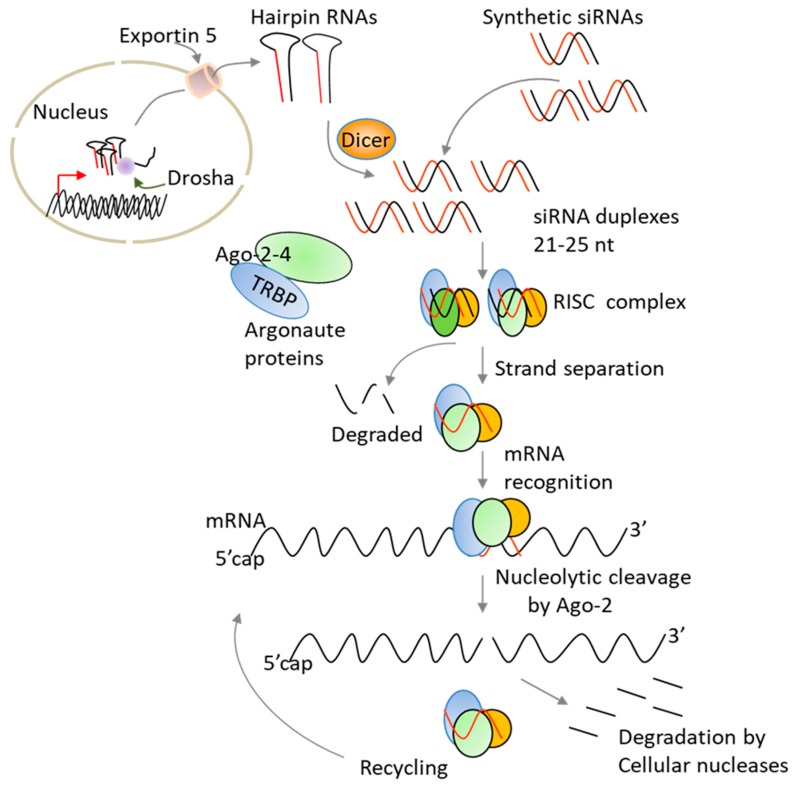Figure 3.
Schematic representation of gene silencing by siRNAs. Synthetic siRNAs are directly loaded into a multi-protein complex termed RNA-induced silencing complex (RISC) where the sense strand with high 5’-end stability is cleaved by the nuclease Argonaute 2 (Ago-2), resulting in strand separation. Subsequently, the RISC containing the antisense strand binds to complementary mRNA sequences. Gene silencing is a result of nucleolytic degradation of the targeted mRNA by Argonaute 2, a RNase H enzyme. Cleaved mRNA molecules are rapidly degraded by cellular nucleases. Following dissociation, the RISC is able to recycle and cleave additional mRNA molecules. Unlike chemically made siRNAs, hairpin RNAs (siRNAs) produced from plasmid vectors in cell nucleus are processed by Dicer in the cytoplasm before entering the RNAi pathway. Normally, hairpin RNAs and microRNAs are processed in the nucleus by the endonuclease Drosha prior to export to the cytoplasm by exportin 5. TRBP: TAR RNA-binding protein.

